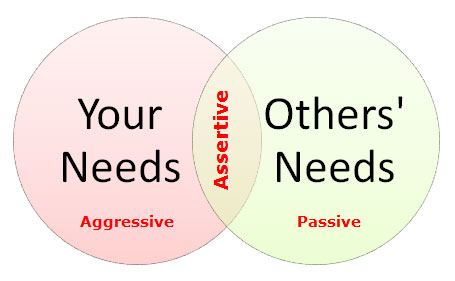
What is culture? It's simple:
Your Leaders ARE Your Culture
Stuck on Culture?
Organizations kick around the word "culture" frequently, asking questions such as, "How can we build our culture? How can we make our culture stronger?" Senior leaders often lament with statements such as "We have no culture. We need a culture. We've tried to change our culture over and over again, and we're just stuck. We aren't retaining our high performers, we need to work on our culture. Let's fix our culture, now!"
Culture change requires time.
Gallup research tells us that only 27% of employees believe in their organization's values. And only 34% of employees are engaged at work.
Values describe culture. A strong culture is power.
Building a stronger culture which inspires the organization's people or volunteers to engage with hearts, minds AND hands is often leadership's biggest mystery to solve.
Yet, a strong and engaging culture IS is within any leadership team's reach.
What is Culture?

So, let's start here. Culture is often difficult to define. Leaders believe it can't be tangibly experienced.
Gallup defines culture as how employees interact and how work gets done. Simple, observable, real.
It takes intentional focus to measure. And, it's not fast.
In other words, you can't microwave culture!
Culture is like a crockpot. Multiple ingredients are put into the pot. They mix together. The individual flavors complement and blend. It's a slow process. It's intentional. And over time, an exceptional culinary experience envisioned by the chef and unique to the dish will be experienced.
 An organization as a crockpot?
An organization as a crockpot?
Ingredients such as an inspiring vision statement of "Why we exist."
And a directive mission statement of "What we do to add value."
Seasoned with complementary core values "How we do what we do"and "how we make decisions around here."
And then, served and given the final touch by the people and business practices of the organization. Experienced by all stakeholders -customers, employees, investors, vendors, community.
How To Build Culture?
The answer isn't found in the hanging of motivational posters, culture rollout initiatives, or sending of memos to communicate the culture. Been there, done that.
The real question is: how do we bring an organization's vision - mission -core values to life through its culture?
The answer is more like a "connecting the dots" activity.
The answer is in the integrity of the leaders who set the pace for the organization.
What do I mean? It's really pretty simple.
Leaders who "Walk the talk."
Leaders who INFLUENCE.
Gallup research shows that 70% of an employee’s motivation is influenced by the manager!
Leaders who add value to others, everyday - by caring, equipping, inspiring and lifting.
Leaders who not only communicate, but connect - with the hearts and heads of their people.
Leaders who influence the hands of their people - to "participate" in carrying out the mission.
Leaders who model the core values every day - not just when it's convenient.
Leaders who want their people to feel empowered - equipping them to carry out the mission.
Leaders who want their people to be significant, to make a difference, to contribute.
How To Develop Leaders?
Now, we're getting intentional! Developing leaders is much like building culture. It takes time. It is more than attending a training seminar. Or reading a book and placing it on a shelf.
It's about taking the "Knowing" to the "Doing."
For example, a group of highly successful General Managers (GMs) were focused on reducing employee turnover while developing high performing teams. The espoused culture valued teamwork, integrity, servant leadership and more. Yet it wasn't working as expected. They were stuck in their attempts to influence their teams, to achieve desired results.
The team started by playing The Leadership Game - aligning and debating the leadership visions and values of their organization. And the Senior Management Team participated in the conversations. Using questions to embrace new perspectives. Growing leadership intelligence.
What's Influence Got to Do with Culture?
These leaders wanted to learn more about influence - so they could be more effective in leading their teams. They went about observing and discussing how the leadership behaviors of their teams either influenced or hindered high performance.
Their management teams were frustrated because they felt that although they "communicated" expectations until they were blue in the face, their teams were not consistently performing nor achieving desired goals. The managers may have had position power - the title, yet little influence was happening. Their businesses were seeing higher turnover and lower engagement, evidenced by a lack of commitment to delivering on the mission, or even showing up fully for work. And that impacted their bottom lines!

In observing their management teams' and their own leadership styles, the GMs began to see behaviors that were not connecting people with the core values or mission. Or the leaders.
Training and coaching of employees was a combination of "Tell, tell, tell" and aggressive behaviors such as demanding, micromanaging, yelling, threatening, not listening, engaging in a "I win, you lose" debate and even thumping fists on the table.
At the other end of the assertiveness spectrum, they also observed managers being complicit by saying one thing and doing another, often behind the backs of others - with a passive-aggressive intention to sabotage, harm or damage (perhaps unintentional).
To move forward, the team learned to recognize and apply assertive leadership behaviors to create a win-win and an open and inclusive culture where all ideas were welcomed, making the organization stronger. Growing leadership intelligence.
Resulting in reduced turnover, higher engagement levels and increased profitability.
Your Leaders ARE Your Culture
Bottom Line: When leaders are intentional with their words and their actions, the culture will reflect the values and actions desired.
And leadership intentionality begins with an awareness that it's not just about communication, it's about connection. With values. With people.
Leaders need to know that in every interaction, his or her people are silently answering 3 questions about them, and the answer they give determines the power of the culture:
"Do you care about me? Will you help me? Can I trust you?"
- Then, and only then, will the words connect with the heart, mind and hands of your people.
- Then, and only then, will your people say you are trusted, and that you are worth following.
- Then, and only then, will you be a leader of INFLUENCE.
- Then, and only then, will you move the culture forward.
- Then, your leaders will have built the strategic foundation required for outstanding individual, team and business performance.
 Leadership is a Choice to Move from the Knowing to the Doing
Leadership is a Choice to Move from the Knowing to the Doing
What is one takeaway you have from this article?
Are your actions and communications building culture?
Are you prepared to shift the organization's culture from what is to what it could be with a focus on leadership behaviors? Growing leadership intelligence?
The answers to your culture are in these questions...
About the author
Anita Dahlstrom, MBA, SPHR, is a certified emotional intelligence practitioner and a certified leadership coach through the International Coaching Federation. Her company, Possible Conversations, LLC, brings customized leadership assessments and training to meet
your specific needs.
As a certified member of the John Maxwell Team, she also brings award-winning leadership training based on the world's #1 leadership expert, John C. Maxwell - including workshops, seminars, keynote speaking and leadership coaching. Her mission is to create spaces to grow, learn and increase leadership influence and results through personal and professional growth to individuals, organizations and companies worldwide.
Leadership Training Offer